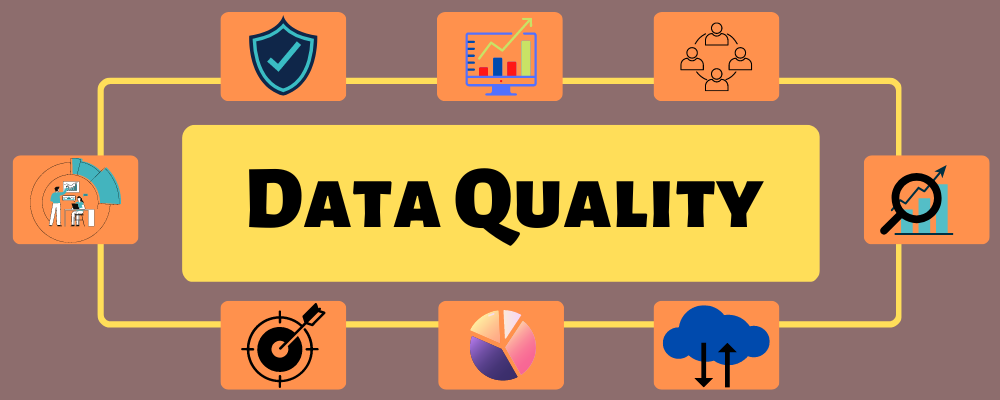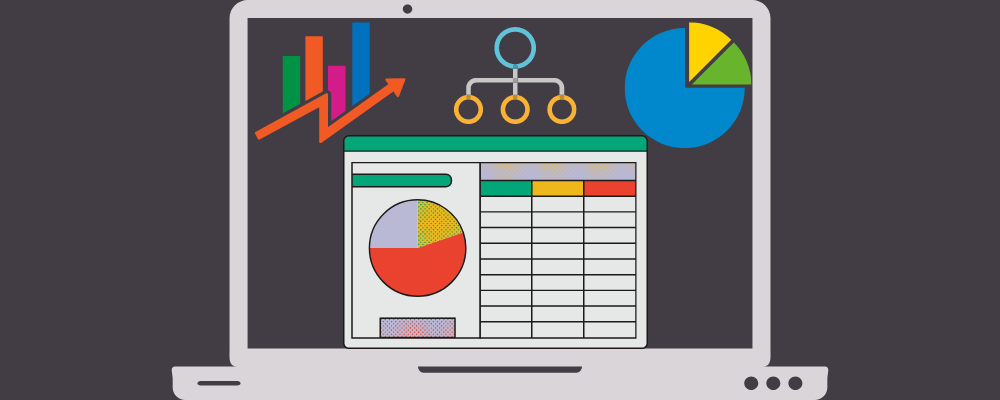Ensuring data quality is important for businesses to make the right decisions, understand their customers better, and maintain consistency across the organization.
The reason is that data drives modern businesses.
Hence, it needs to be correct, consistent, complete, relevant, and reliable to plan and execute the right strategies based on the collected data.
But if the data is terrible, it can significantly impact your decisions, customer experience, and the organization.
Therefore, you must focus on collecting the correct data to help you make the right strategies to run your business and shape your customer’s journey.
In this article, I’ll discuss data quality, its dimensions, and how to measure and improve it.
Let’s get started.
What Is Data Quality?
Data quality is the state of data that tells how reliable a set of data is to be considered in decision making, planning, and operations. If a data set is of high quality, it must fit the intended use or purpose. It must be complete, accurate, reliable, easy to access, consistent with different sources, and presented appropriately when needed.

Currently, there is no globally accepted standard of data quality and ways to validate it since requirements differ from one organization to another and one project to another. Companies create frameworks and policies to collect, organize, manage, and determine data quality based on their specific needs.
Practically, data quality is ensured by conducting assessments and interpreting data quality metrics, such as accuracy, relevancy, consistency, completeness, credibility, timeline, etc. Next, the data analyst measures the overall data quality score and rating to show the actual quality of a dataset.
Organizations can use this information to understand the data’s value and relevance. Thus, they can decide whether or not to use this data for business planning and implementation, ensuring it must add value to the end consumers.
Dimensions of Data Quality

Data quality has various characteristics or dimensions, which are the metrics used by analysts to measure the quality and usefulness of the data for users. Although many metrics differ from project to project and company to company, some of the common ones are:
Accuracy
No matter how much data you gather, if it’s inaccurate, there’s no point in using it in your business strategies. Because if you do, the result could be the opposite of what you might have desired. It can reduce customer trust in your organization, employees, and offerings.
Hence, it’s essential to assess the accuracy of a dataset by employing an effective and sustainable strategy to verify its source and manage data.
Relevance
Even if your data is accurate, it won’t be helpful if it isn’t relevant to what you need for your business. Having unnecessary pieces of data can also clutter your database, wasting your time and effort in managing it.

For example, you are looking for quality apples but have quality oranges. Although it’s a fruit of excellent quality, you are looking for apples, not oranges.
Therefore, data needs to be relevant. So, when assessing data quality, look at whether the data is relevant to serve your purpose of collecting it in the first place. If yes, it’s of good quality.
Completeness
If you continue collecting more and more data without thinking about whether it’s complete, it might become unusable during implementation.
Hence, when you collect data, ensure it’s complete such as the full name of a lead, not just the first name or last name, complete address, etc. This doesn’t mean storing information that’s not necessary but the complete, helpful information to drive your strategy.
Consistency
High-quality data must not contradict the data you have already kept in other databases. Because if it does, one of them could be wrong. Inconsistent data leads to confusion and assessment, which takes time to find and remove the wrong data.
Therefore, ensuring your data is consistent across your database and organization is pertinent. You can get everyone to use the same software system or integrate and synchronize data tools with CRM. This way, everyone will be on the same page for easy collaboration.
Accessibility
Even if you have accurate, complete, relevant, and consistent data, it might not serve the purpose if the right people or team can’t access it. They could be your employees, partners, or clients.
To do this, you can identify people who need access to a specific data set and empower them with tools containing that data. Just ensure they can easily access it wherever and whenever they need it.
Timeliness

Data changes constantly. It’s unnecessary that a client who used to have a specific phone number or email still has it; they might have changed it. And if you use the same outdated data to send your promotional messages, your efforts go in vain.
Outdated data might not represent the current scenario. Hence, it’s crucial to track historical data and changes. This will help you update the records with time and stay relevant.
Uniqueness
For many projects, such as marketing, producing copy, etc., uniqueness is a must-have characteristic of data quality. Uniqueness means no data duplication or overlapping with other records. Duplicate data can compromise your credibility and user trust.
Hence, ensure the data is unique and fits your purpose. Data analysts perform data cleansing to address low uniqueness scores to ensure uniqueness.
Apart from the above, other data quality dimensions can include data availability, comparability, flexibility, reasonableness, and plausibility.
Why Is Data Quality Important?
Organizations strive to maintain high-quality data to make the right and informed decisions and observe returns. This offers plenty of benefits to businesses, including:
- Make faster and better business decisions: Modern organizations must assess data to determine customer needs. This will help you create suitable strategies and become more confident in the making business decisions faster with effectiveness.

- Better collaboration: When you maintain consistent data across your departments and organization, everyone will have access to the same data to use in your efforts. This will help you stay aligned on your priorities and yield cohesive results.
- Understand customers better: If accurate and reliable, customer data lets you understand your customers more. You will get closer insights into their pain points, needs, interests, and needs. It allows you to develop better offerings to address customers’ concerns and build meaningful relationships.
How to Measure Data Quality

Bad quality data can harm a business regarding reputation, customer trust, and other harmful consequences. Hence, you must evaluate the collected data to ensure it’s of excellent quality and suitable for your business needs. This requires you to establish specific processes and metrics to measure data quality.
So, evaluate your data against the set metrics, analyze the results, and improve the data to fit your purpose. Let’s understand how to measure data quality.
#1 Subjective Assessment
This assessment involves data analysts, stakeholders, etc, to evaluate the quality of a specific data set. Based on their perception, they can make a decision. For example, if they find a dataset inaccurate, they may remove it or assign others to get the accurate data and put the project on hold until this is resolved. This means the assessment is subjective to a decision maker.

#2 Objective Assessment
Objective assessment checks for objective metrics recorded in a given dataset. You can evaluate this based on the task, or it can be completely metrics-dependent.
To establish these metrics and evaluate objective data, you can create Key Performance Indicators (KPIs) matching your requirements. And when you perform objective assessments, you can measure data quality in three ways:
- Simple ratio is the total number of expected outcomes to possible outcomes. Usually, the simple ratio is either 0 or 1, where 1 is the most desirable/expected result. This ratio measures consistency and completeness.
- Max or min: This method can help you manage several data quality variables. Here, the max is more of a flexible number and can represent variables such as accessibility and timelines. On the other hand, the min is conservative and can represent variables such as accuracy.

- Weighted average: This is another method you can use in the place of min to understand how each variable delivers its value into the equation.
This is how you can measure data quality to shape your business strategies. But this is not the end of it. After evaluating subjective and objective data quality metrics, your next step must be to analyze the results and strive to improve your data to bring maximum value to your business.
How to Improve Data Quality
Analyzing evaluated data quality metrics will help you spot data that doesn’t meet the criteria or KPIs. This way, it will be easier to clean or remove such data and keep your database stocked with quality, value-adding data to meet your present and future goals.
Look at these methods to improve data quality and mitigate issues.
- Data profiling: This process can help you understand your entire data assets for effective data quality management. It is vital since employees, stakeholders, and collaborators would have collected and stored data over the years. It can have varying standards, formats, storage, and so on. Hence, to improve data quality, get the complete picture of what you are dealing with (here data) to start streamlining it.

- Data matching: Data matching involves correlating data to find redundancy. It is done to ensure no such instances where multiple pieces of data represent the same meaning. For example, if you have a record in an individual’s name, saying Johnny Depp. Now, if you find another record with the name John Depp but representing the same individual, it’s redundant. Hence, you must remove such data to prevent clutter.
- Data governance: Data governance means data standards and policies to focus on KPIs and data elements. Data governance standards can also outline business rules organizations must follow to maintain data quality.
- Reporting: Data reporting involves maintaining a quality log and documenting known issues in your data. This will help you determine if you need to perform more data cleansing and optimization. You can use the data collected from data matching and profiling to measure KPIs and generate reports.
- Digital Asset Management (DAM): Data can be in the form of digital assets like text, images, videos, and other files. This helps you ensure digital data quality and relevance.
- Master Data Management (MDM): MDM frameworks are excellent resources to help prevent quality issues. This involves product, location, and party master data.

Product Information Management (PIM): If you are a goods manufacturer or seller, you must align your data quality KPIs. This will enable the customers to view the exact item they ordered across all stages, from browsing the product to delivery and after-sales. Hence, with PIM, you can create a standardized product data presentation with all the information consistent and reliable.
Customer Data Integration (CDI): CDI requires you to organize customer master data collected via your CRM system, self-service registration pages, social media, etc., into a single source of truth. This way, you can maintain cohesiveness and boost collaboration.
Data Quality Best Practices
Many organizations might think they have the best quality data maintained in their database, but the story could be different. So, here are some of the best practices to ensure data quality and check all the boxes.
- Choose important metrics: You must be specific in choosing the metrics you want to evaluate. Select and track only those metrics that are valuable in the decision-making process. You can’t go on evaluating everything that might not add value; it will unnecessarily consume time, resources, and effort.

- Ensure a single source of truth: Ensuring a single source of truth for all your data across your organization is essential. You might store data in several systems, such as sales tools, CRM, etc. And to maintain a single source of truth, you must be consistent everywhere. You can ensure this by performing audits.
- Perform regular audits: Prevention is better than cure. Regular data quality audits can enable you to spot issues quickly before they become a bigger problem. You can conduct data quality audits monthly, weekly, or monthly based on your data volume.
- Analyze the reasons for failures: Analyzing why your data quality failed or became a success is necessary to optimize your strategies. Apply your successful efforts to areas that need improvements while troubleshooting roadblocks. It will increase your effectiveness in collecting and managing data quality.

- Invest in necessary resources: Investing in the right resources for reporting, analysis, training, and another process is beneficial to managing data quality effortlessly. You can choose a single tool that offers all these features or go with them separately based on your priorities and needs.
- Use data quality management software: To manage data quality with incredible speed and efficiency, you can leverage the power of automation. A good data quality management tool will also help you make data easily accessible. Thus, go for the right data reporting and analysis software, such as Operations Hub, Talend Open Studio, OpenRefine, Dedupely, etc.
Examples of Data Quality Management Across Industries
- Finance: Businesses offering financial services perform data quality management to identify and secure sensitive data, monitor and maintain compliance, and automate reporting.
- Manufacturing: Manufacturers do it to maintain accurate records of their vendors and customers and update them periodically. They also need this to be aware of quality issues on time and remediate and optimize their strategies.

- Healthcare institutions: Need data quality management to maintain accurate, complete patient records. It helps them provide suitable patient care and treatment plans and enables faster and correct billing and risk management.
- Public sector: Public sector organizations need data quality management to maintain complete, precise, and consistent data about their current projects, employees, contractors, and other constituents to ensure they meet their objectives.
Conclusion
Data quality is vital for businesses. Hence, your collected data must be of high quality in terms of accuracy, completeness, relevancy, credibility, and consistency, among other characteristics. It will help you make the right business decisions, serve customers well, and run the organization effectively.
Si quiere puede hacernos una donación por el trabajo que hacemos, lo apreciaremos mucho.
Direcciones de Billetera:
- BTC: 14xsuQRtT3Abek4zgDWZxJXs9VRdwxyPUS
- USDT: TQmV9FyrcpeaZMro3M1yeEHnNjv7xKZDNe
- BNB: 0x2fdb9034507b6d505d351a6f59d877040d0edb0f
- DOGE: D5SZesmFQGYVkE5trYYLF8hNPBgXgYcmrx
También puede seguirnos en nuestras Redes sociales para mantenerse al tanto de los últimos post de la web:
- Telegram
Disclaimer: En Cryptoshitcompra.com no nos hacemos responsables de ninguna inversión de ningún visitante, nosotros simplemente damos información sobre Tokens, juegos NFT y criptomonedas, no recomendamos inversiones


